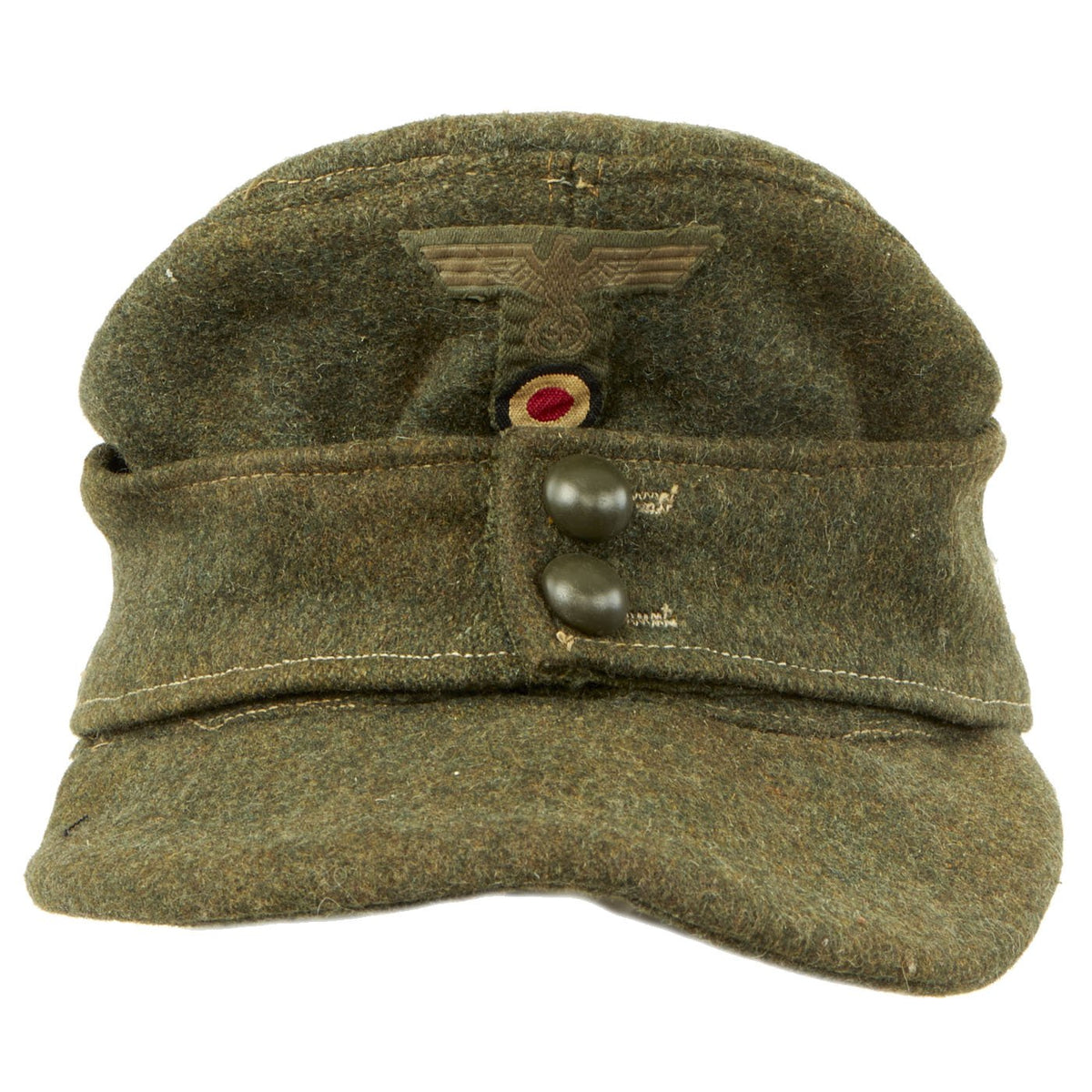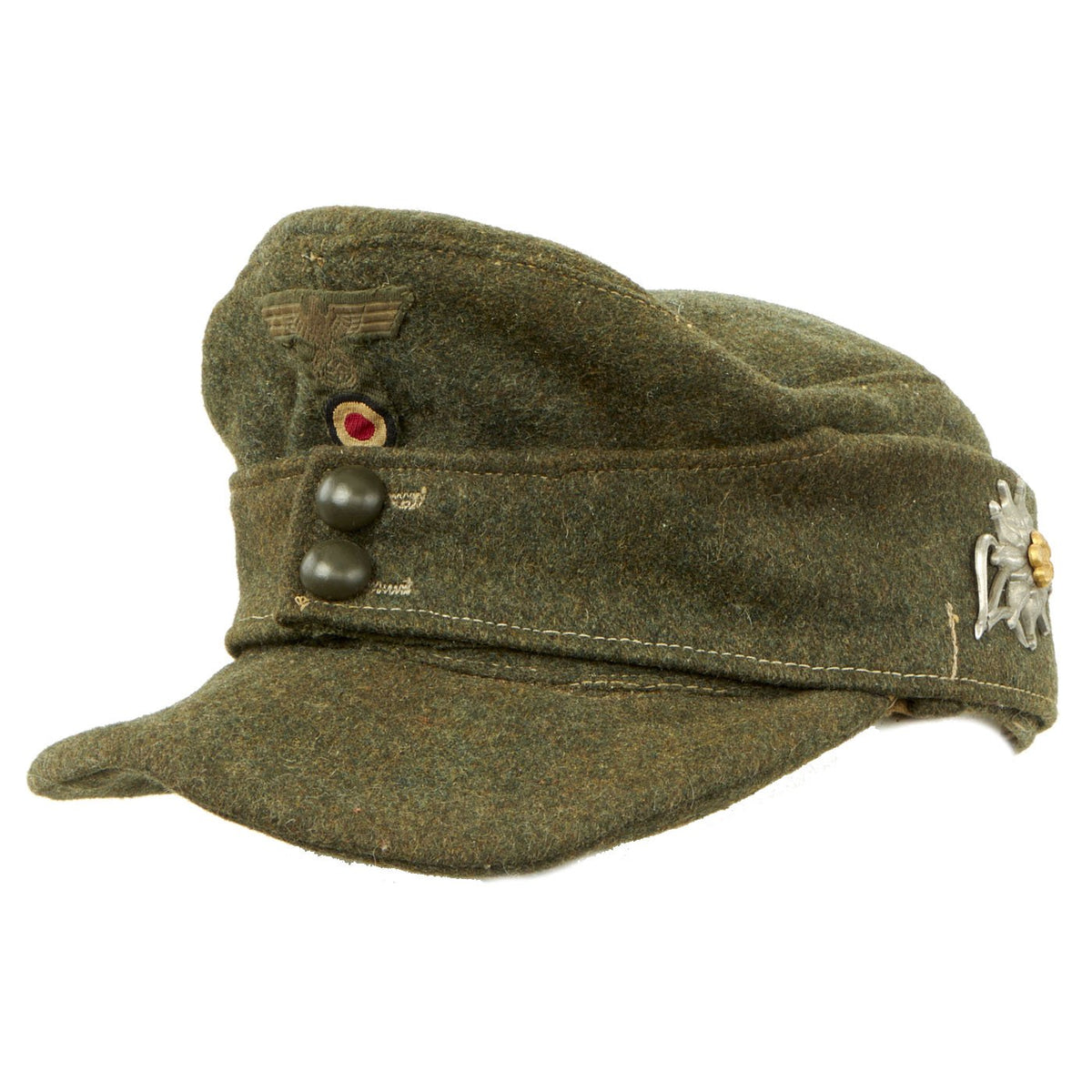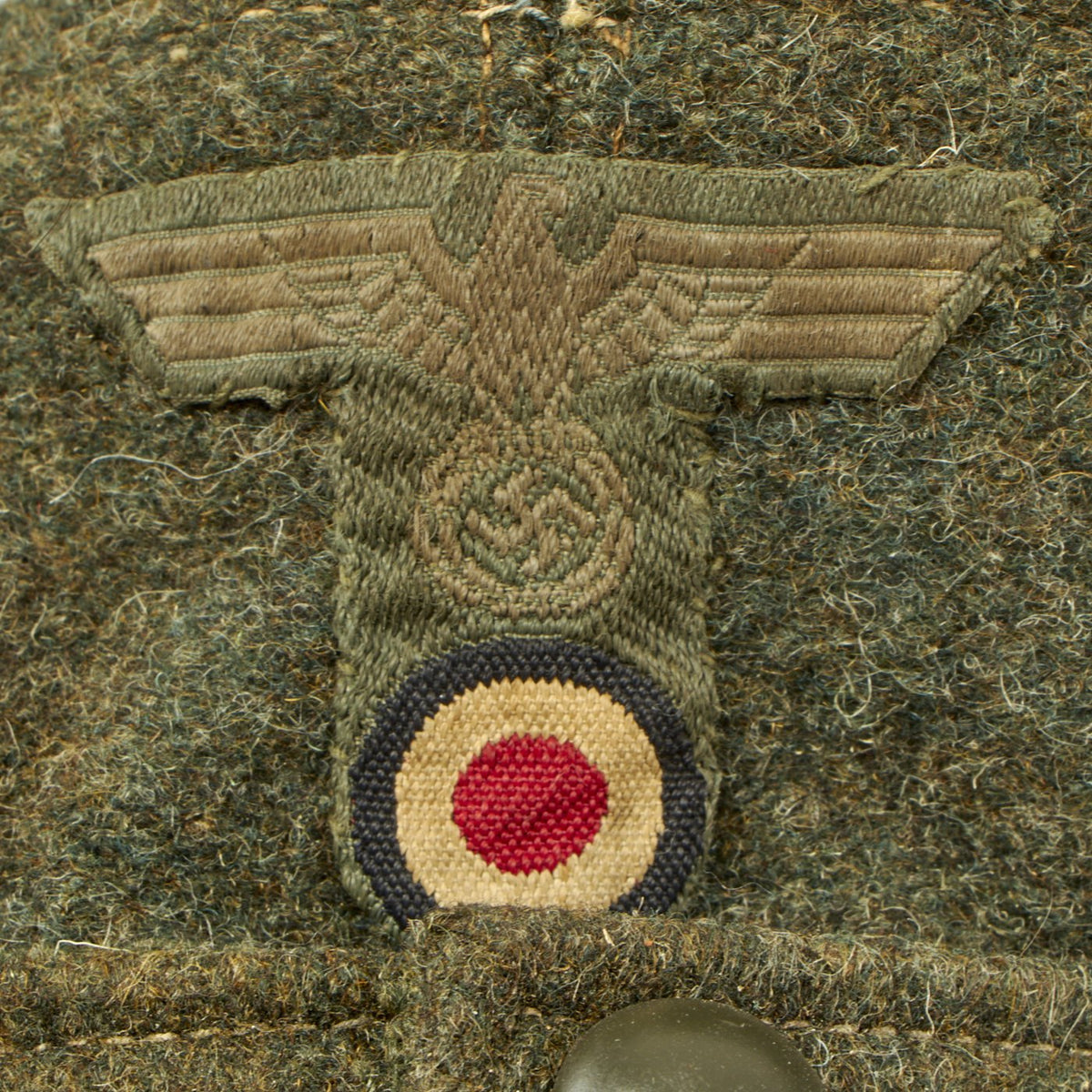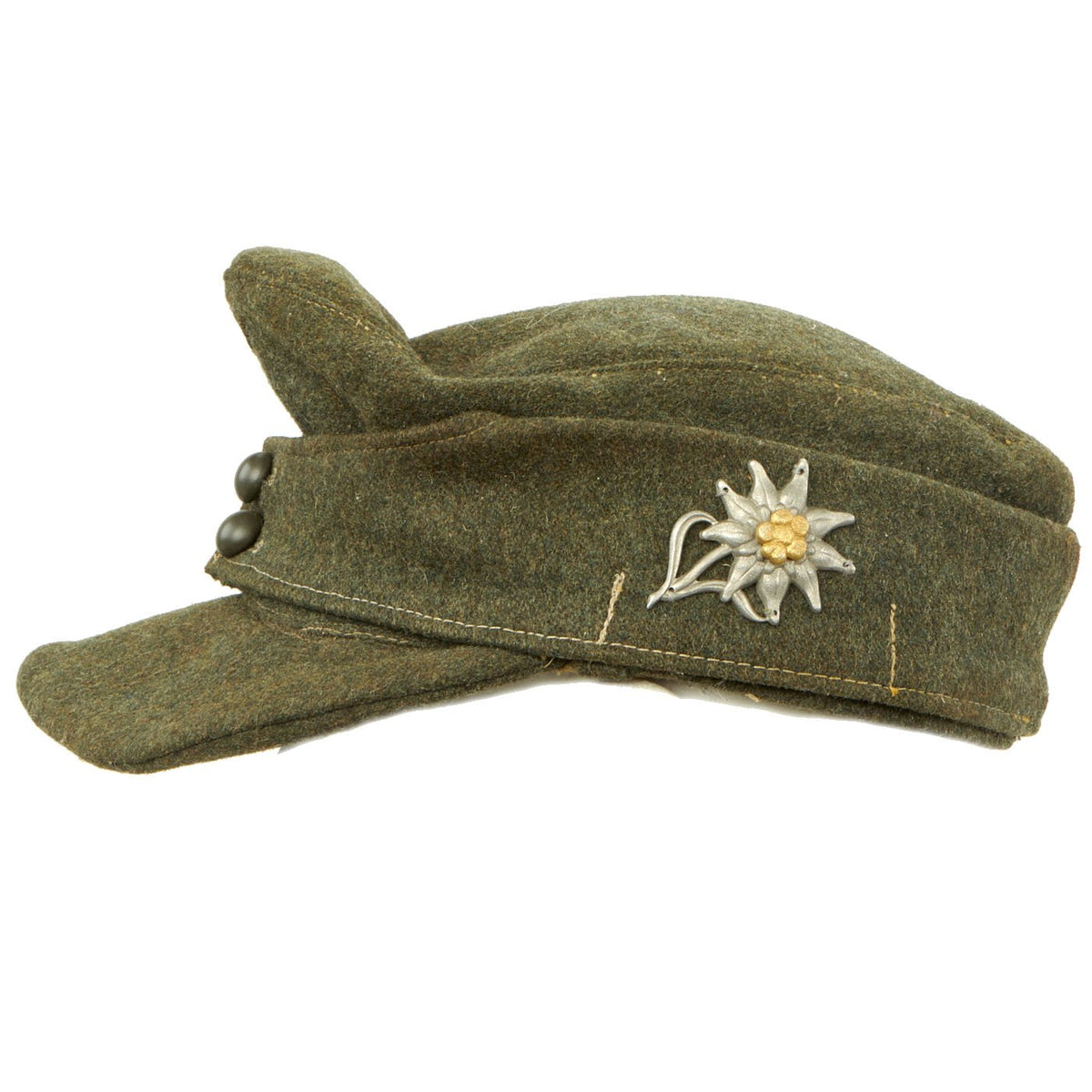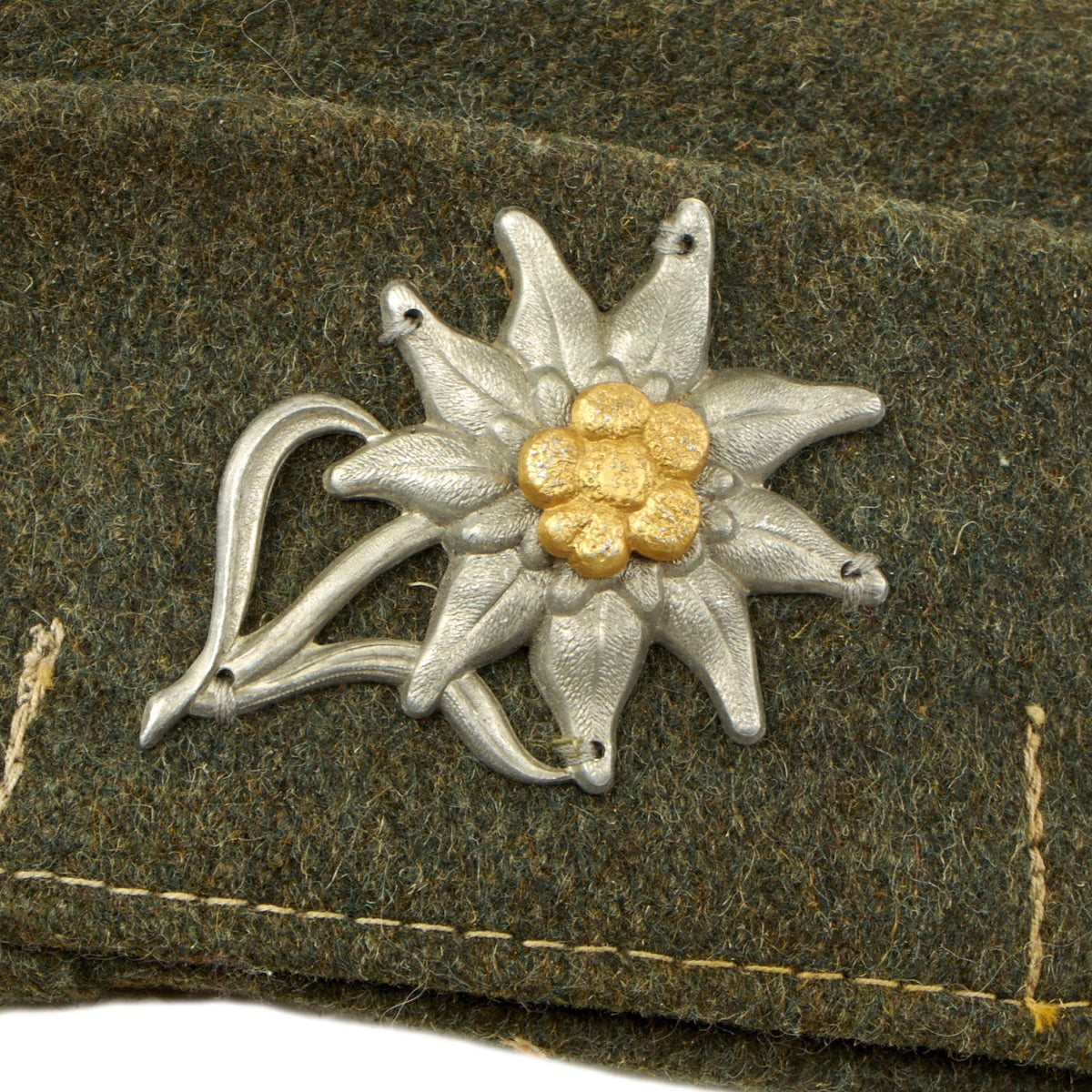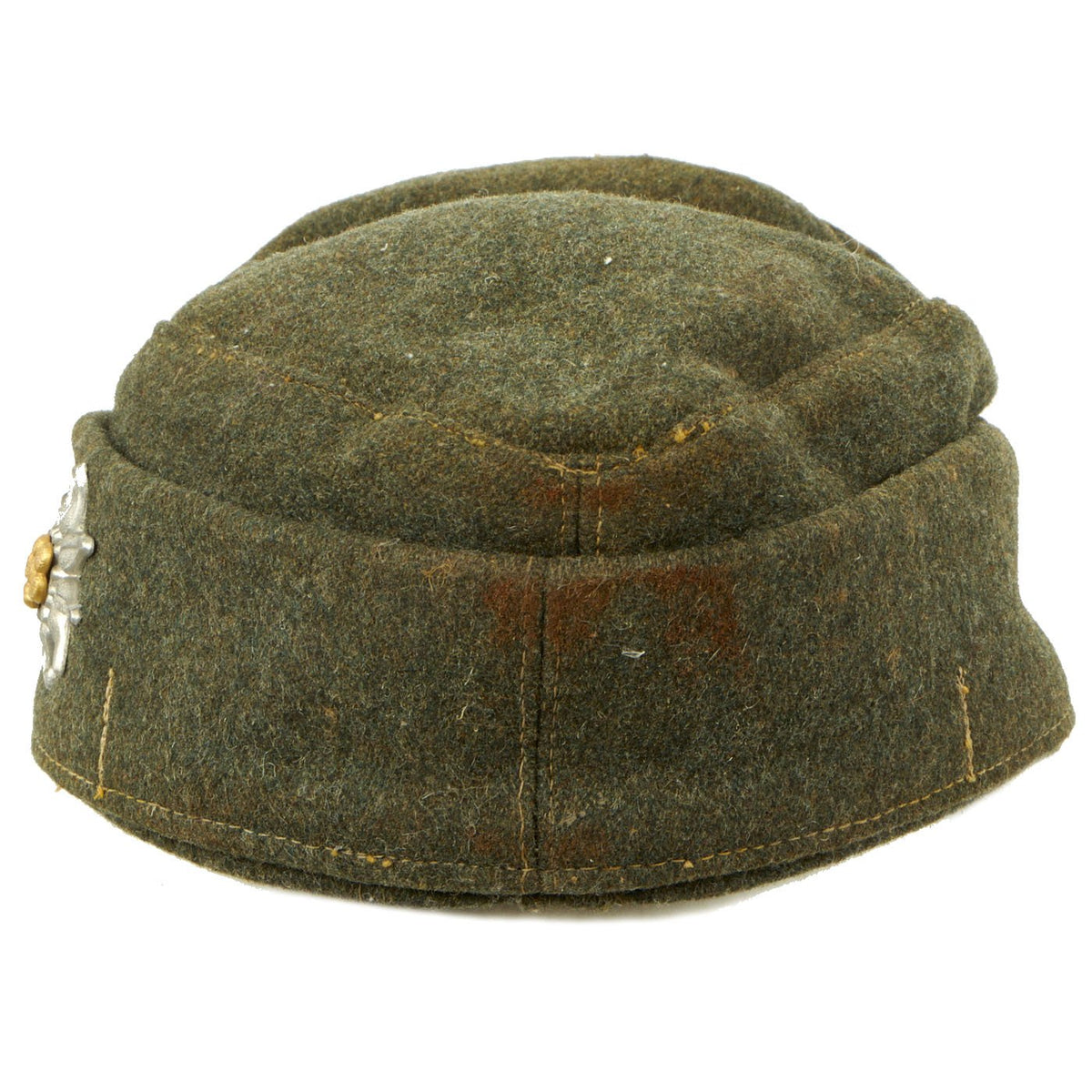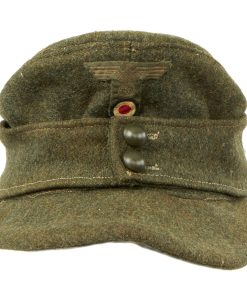Original German WWII Italian Made Mountain Troop M43 Bergmütze Field Cap with Edelweiss Badge – size 57 Original Items
$ 1.395,00 $ 348,75
Original Item: Only One Available. The German Feldmütze (Field Cap) was originally used in late WWI, and was a variety of unpeaked garrison cap. After the war, it was replaced by a variety of “Ski Cap” that was based on the Bergmütze (Mountain Hat) used by Austrian and German Gebirgsjäger (Mountain Troops) during WWI. Germany had adopted it for Mountain Troops 1915, and after the war it spread throughout the military.
This is a very nice service used example of a German Gebirgsjäger Bergmütze (Mountain Trooper Cap), which was made in Italy for German forces. There were a lot of mountains in Northern Italy, and German forces stationed there definitely needed caps. It was easier to source them from Italian makers due to logistical reasons.
The cap has a great well broken in look. The cap is constructed of Heer Feldgrau (Field Gray) wool, and has the correct “fold down” skirt for colder weather. It features a two steel buttons button to the front, securing the skirt, and has the correct securing loops on the underside, which are a bit larger than the German style. Fabric is relatively thick for a mountain trooper.
The peak of the cap has a very nice combined Eagle and cockade BEVO insignia on the front. There is a non-magnetic metal Edelweiß badge stitched in place on the left flap. This flower, found in the mountains of Southern Germany and Austria, is the symbol used by Gebirgsjäger mountain troops.
The interior of cap is a light gray HBT fabric, stamped 57 on the top for the size. This lining style is common with Italian made caps. It has sweat and oil stains ;around the edge, indicating light to moderate use. The visor is still in good condition, though it does have a fold in it, and ripples as well, very common in the field, as these often would get wet. The stiffener in these caps is made from pressed paper, so they easily deform with use and especially moisture.
A great example of a classic hat worn by German Army Mountain Troopers in WWII, made by their ally Italy. Very impressive and ready to display!
Gebirgsjäger material is among the most popular of all German WWII items. They were the light infantry part of the alpine or mountain troops (Gebirgstruppe) of Germany and Austria. The word Jäger (meaning “hunter” or “huntsman”) is a characteristic term used for light-infantry or light-infantryman in German-speaking military context.
The mountain infantry of Austria have their roots in the three Landesschützen regiments of the Austro-Hungarian Empire. The mountain infantry of Germany carry on certain traditions of the Alpenkorps (Alpine corps) of World War I. Both countries’ mountain infantry share the Edelweiß insignia. It was established in 1907 as a symbol of the Austro-Hungarian Landesschützen regiments by Emperor Franz Joseph I. These troops wore their edelweiss on the collar of their uniforms. When the Alpenkorps came to aid the Landesschützen in defending Austria-Hungary’s southern frontier against the Italian attack in May 1915, the grateful Landesschützen honored the men of the Alpenkorps by awarding them their own insignia: the edelweiss. Together with the Fallschirmjäger (Paratroopers) they are perceived as the elite infantry units of the German Army.
Fast Shipping with Professional Packaging
Thanks to our longstanding association with UPS FedEx DHL, and other major international carriers, we are able to provide a range of shipping options. Our warehouse staff is expertly trained and will wrap your products according to our exact and precise specifications. Prior to shipping, your goods will be thoroughly examined and securely secured. We ship to thousands clients each day across multiple countries. This shows how we're dedicated to be the largest retailer on the internet. Warehouses and distribution centres can be located throughout Europe as well as the USA.
Note: Orders with more than one item will be assigned a processing date depending on the item.
Before shipping before shipping, we'll conduct a thorough inspection of the items you have ordered. Today, the majority of orders will be delivered within 48 hours. The delivery time will be between 3-7 days.
Returns
The stock is dynamic and we cannot completely manage it because multiple stakeholders are involved, including our factory and warehouse. So the actual stock may alter at any time. It's possible that you may not receive your order once the order has been made.
Our policy is valid for a period of 30 days. If you don't receive the product within 30 days, we are not able to issue a refund or an exchange.
You can only return an item if it is unused and in the same state as the day you received it. You must have the item in its original packaging.
Related products
Uncategorized
Uncategorized
Uncategorized
Armored Burgonet Helmet & Polearm from Scottish Castle Leith Hall Circa 1700 Original Items
Uncategorized
Uncategorized
Uncategorized
Uncategorized
Uncategorized
Uncategorized
Uncategorized
Uncategorized
Uncategorized
Australian WWII Owen MK1 Machine Carbine SMG Custom Fabricated Replica with Sling Original Items
Uncategorized
Uncategorized
Uncategorized
Angolan Rebel 1970s era 60mm Inert Display Mortar from Angolan Civil War Original Items
Uncategorized
Uncategorized
Uncategorized
Uncategorized
Uncategorized
Armoured Fighting Vehicles of the World: AFVs of World War One (Hardcover Book) New Made Items
